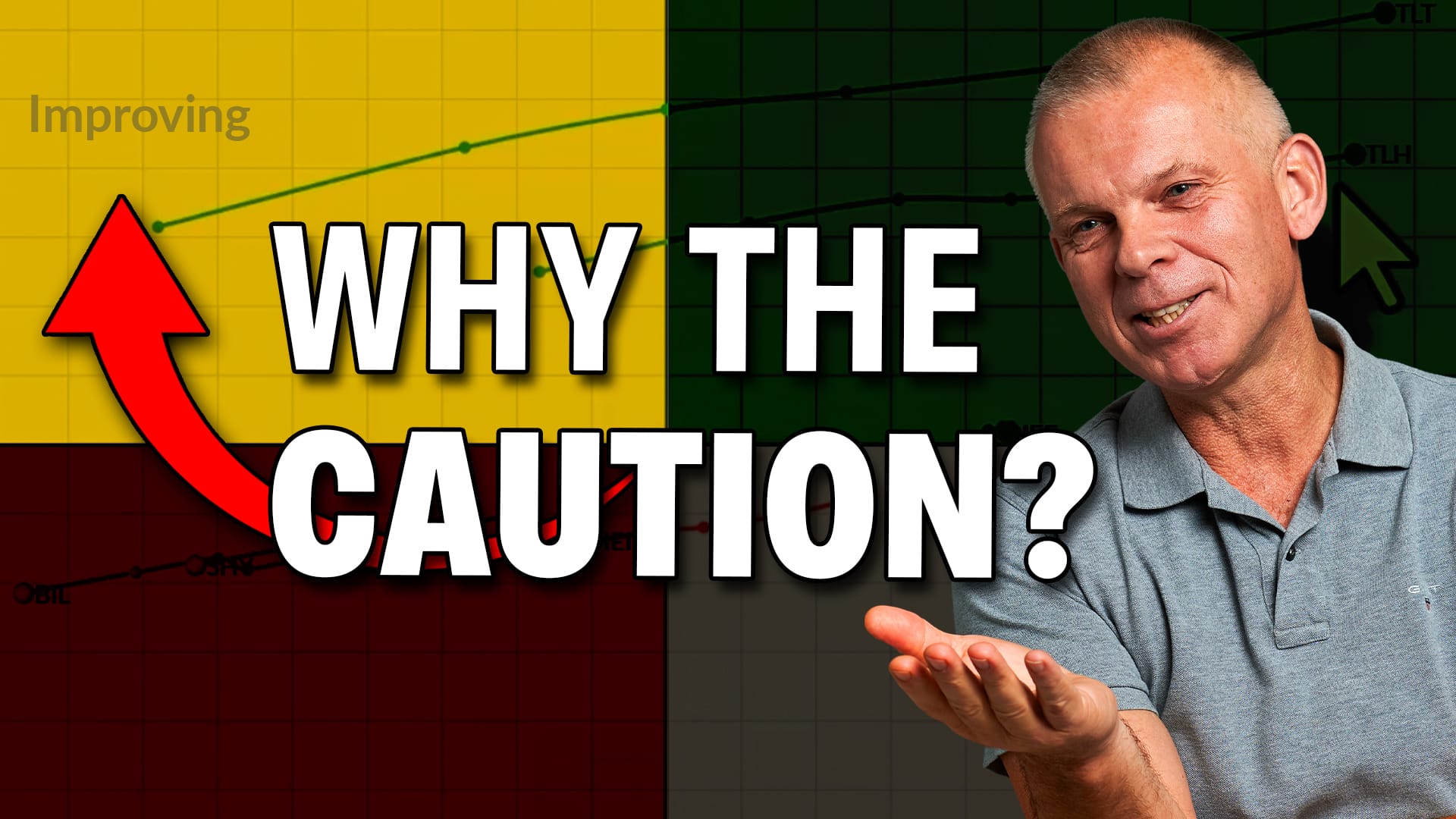MCCLELLAN INDICATORS SHOW IMPROVEMENT IN MARKET BREADTH -- AIRLINES CONTINUE TO SHOW MARKET LEADERSHIP -- AIRLINE LEADERS ARE JETBLUE AND CONTINENTAL -- BOUNCE IN T-BILL AND T-BOND RATES SHOWS A BIT MORE CONFIDENCE
MCCLELLAN OSCILLATOR REACHES NEW HIGH... A couple of readers have asked what the implications are for the current high reading in the McClellan Oscillator. For those not familiar with it, this breadth indicator is based on the difference between the 19-day and 39-day exponential moving averages of net advances versus declines. It can be calculated for the NYSE Composite Index ($NYMO in Chart 1) or the Nasdaq Composite ($NAMO in Chart 2). The indicator is normally plotted on a daily chart and is used to spot short to intermediate term turning points in the market. Crossings above and below the zero line constitute short-term buy and sell signals. Readings below -100 mark oversold conditions while readings over +100 mark overbought readings. The indicator is also helpful in spotting positive and negative divergences. Negative divergences during April and May, for example, warned of a failing rally (down arrow in Chart 1). A positive divergence during November warned of a coming rally (up arrow in Chart 1). The current high reading (the highest in ten years) appears to carry both good and bad news. The bad news is the both versions are in overbought territory. The good news is that this is strongest breadth reading since the bear market began more than a year ago. There is a better way, however, to determine the long-term significance of the McClellan Oscillator. And that is by using its longer-range version which is the McClellan Summation Index.

Chart 1

Chart 2
MCCLELLAN SUMMATION INDEX IS RISING ... The McClellan Summation Index for the NYSE ($NYSI) and the Nasdaq ($NASI) are longer-range versions of the McClellan Oscillator. The Summation Index is a running cumulative total of the Oscillator. For the SI to rise, the MO must be in positive territory. A negative MO reading causes the SI to drop. The SI tells us more about the long-term trend of market breadth. The black line in Chart 3 is the NYSE Summation Index. That line peaked at the end of 2006 and has been dropping since then. A negative divergence between the NYSI and the NYSE during most of 2007 warned of a top formation. Now for the good news. The NYSI has risen to the highest level in six months and has exceeded its September peak. Even with that improvement, however, the NYSI is still trading below its two-year resistance line. In my view, the NYSI would probably have to exceed that resistance line and its spring high near 500 to give a major bullish signal. In conclusion, the McClellan and Summation Indexes have shown a lot of improvement since October. Not enough, however, to signal a major upturn.

Chart 3
AIRLINES BENEFIT FROM LOWER ENERGY PRICES... Airlines have been one of the market's top groups since midyear. The daily bars in Chart 4 show that the AMEX Airline Index bottomed during July and is one of the few indexes currently trading over its 200-day moving average. In today's trading, the XAL has risen above its early November peak and is trading at the highest level since September. Its relative strength line (below chart) also turned up in July. The main reason for that upturn is the plunge in oil prices that began the same month (bottom line).

Chart 4
JETBLUE AND CONTINENTAL ARE AIRLINE LEADERS ... It's safer to focus on individual stock leaders within a leading market group. The top airline performer is JetBlue. Chart 5 shows that airline leader already trading at the highest level in nearly a year. It's 50-day average has also risen above its 200-day line. Its RS line (bottom of chart) is trading at a new 52-week high. Chart 6 shows Continental Airlines nearing a test of its September peak. Its RS line is rising as well. Its 50-day line is about to cross over its 200-day average. Not a lot of attention has been paid to airlines of late. That may be another reason to take a close at them.

Chart 5

Chart 6
LONG RATES DUE FOR A BOUNCE ... It's well known that long-term Treasury bond yields have fallen to the lowest level in half a century. The collapse in bond yields during the fourth quarter was due primarily to a huge flight to safety as global stock markets fell sharply. Treasury bond prices rose as a result. Chart 7 overlays the 14-month RSI line on monthly values for the 10-Year T-note yield. The RSI reading of 25 puts it at the most oversold level since 1998 (when an earlier deflationary scare resulted from the collapse in Asian currencies and commodity prices). That means that Treasury prices are at the most overbought level in ten years. One of the signs of improvement that we're looking for is a bounce in the yield for Treasury bonds. The daily bars in Chart 8 show a modest rebound in bond yields over the last week (as Treasury prices have declined). Some of that money may be flowing back into the stock market. The upper Bollinger band (currently at 2.8%) shows a potential upside target for the TNX. Also encouraging is the modest uptick in T-bill yields.

Chart 7

Chart 8
T-BILL RATE IS BOUNCING... Most of the scared money since September has flowed to the safety of three-month Treasury Bills. As a result, short-term rates have been trading around zero since November. Chart 10 shows a modest uptick in the 3-month T-bill rate over the last couple of weeks. The rate has risen to 1.30% which is the highest level since late November. Modest as that bounce is, it's the first time since mid-November that investors are moving some money out of T-bills. Some of that money may be moving into other bond categories like investment grade corporate bonds. Some of it also appears to be moving into stocks.

Chart 9
VOLUME IS STILL TOO LIGHT ... Although the market is trading at the highest level in nearly two months, volume remains on the light side. Chart 10 shows that early January volume hasn't shown much improvement. That means that volume has yet to confirm last week's upside price breakout. Chart 10 overlays the on balance volume (OBV) line over the daily bars of the NYSE Composite Index. OBV is a running cumulative total of volume on up days versus volume on down days. The OBV line should be rising with the price bars. Unfortunately, the OBV is still below its mid-December peak. That negative divergence between price and volume needs to be corrected if the market is going to continue its climb. Although volume rose along with prices today (which is positive), I'd like to see volume exceed the levels reached during most of December.

Chart 10








